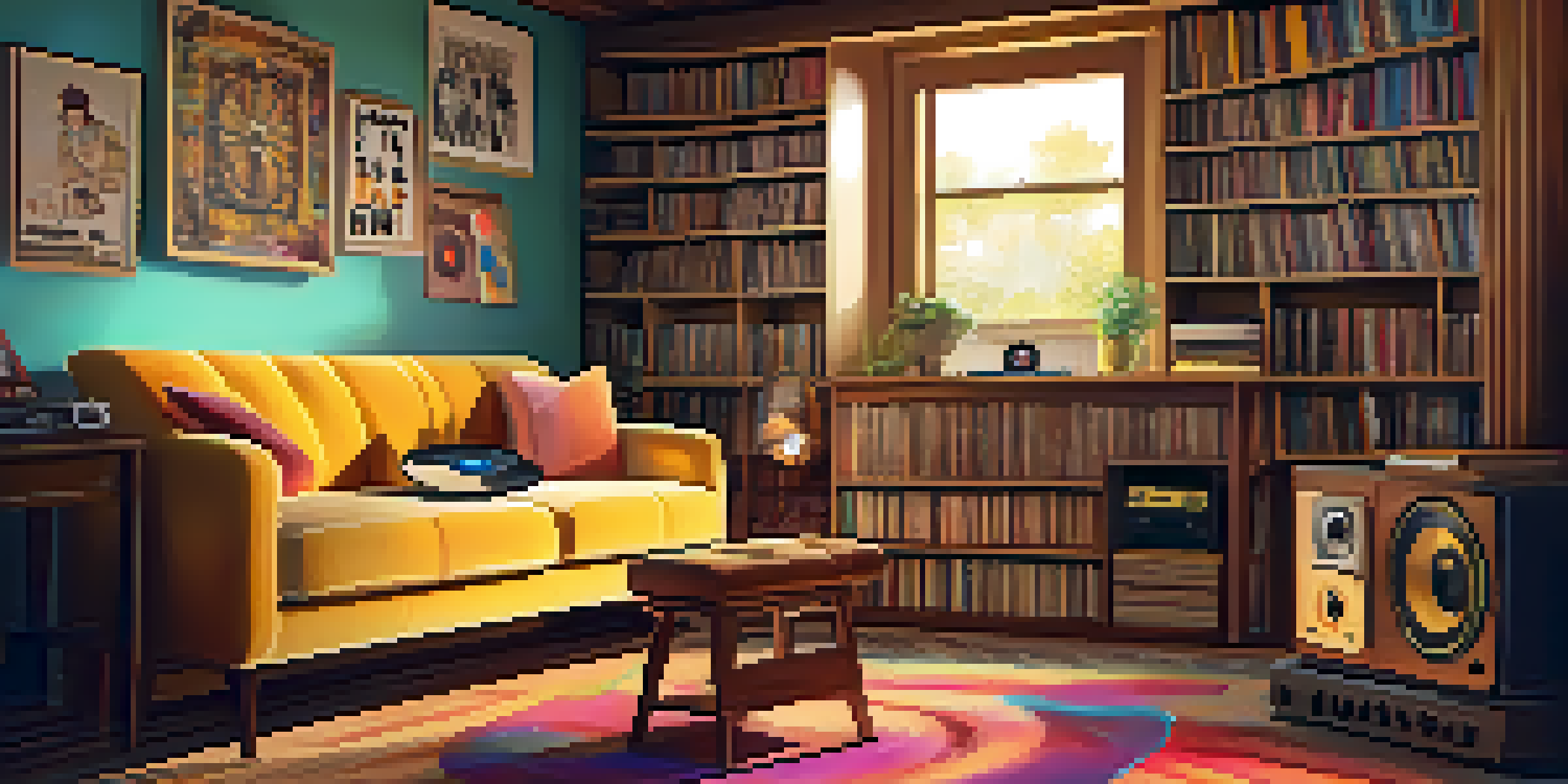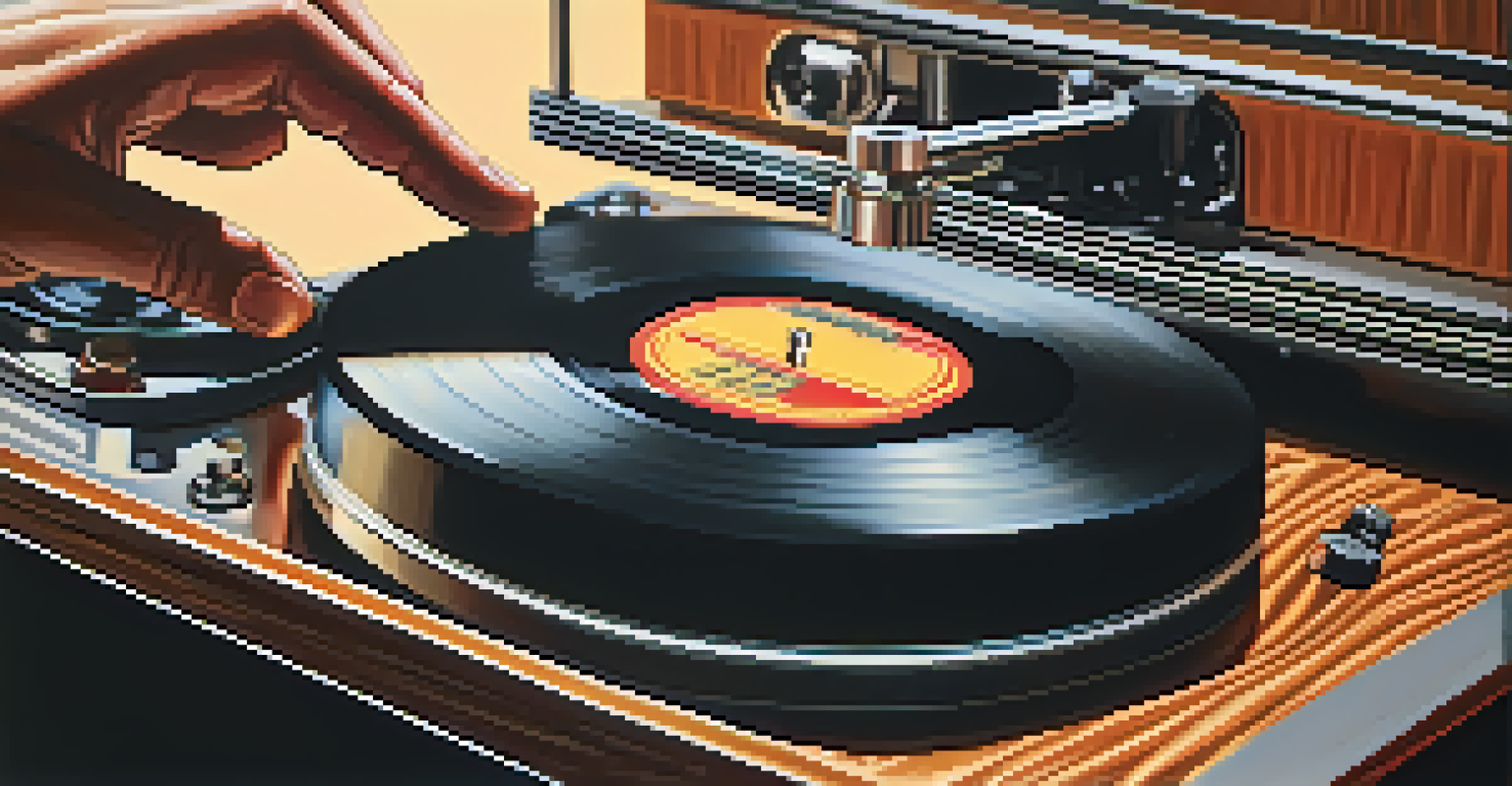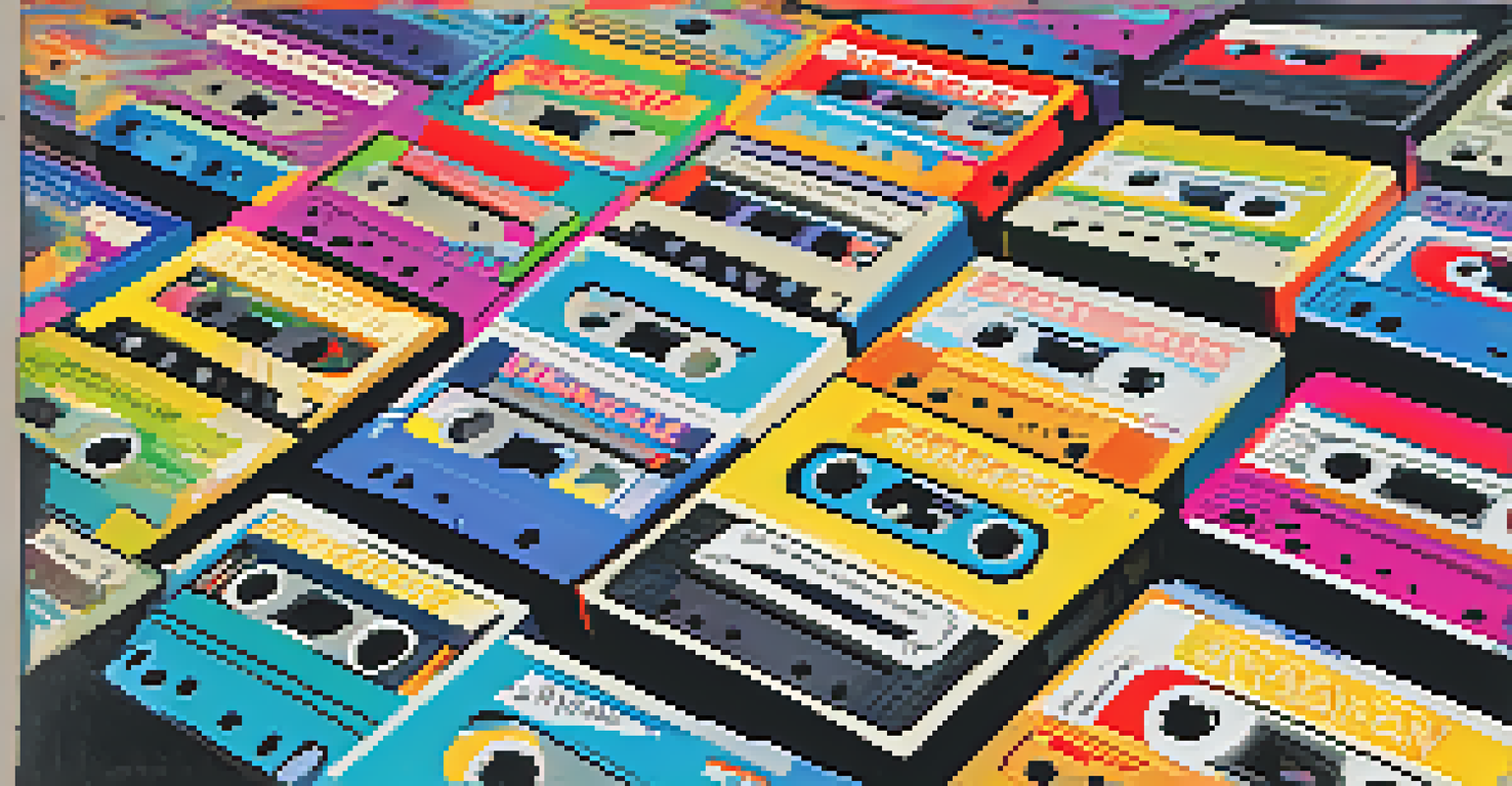From Vinyl to Streaming: Music's Evolution and Nostalgia

The Birth of Vinyl: A Classic Era for Music Lovers
Vinyl records emerged in the late 19th century, revolutionizing how we experienced music. They offered a tangible format that allowed listeners to collect their favorite songs and albums, creating a sense of ownership. Many enthusiasts remember the excitement of flipping through record store bins, searching for that one elusive gem.
Vinyl records are the ultimate expression of music's beauty, a tactile experience that digital formats simply cannot replicate.
The warm, rich sound of vinyl has a unique charm that digital formats often struggle to replicate. This nostalgic quality makes vinyl records appealing even in today’s digital age. Listening to a vinyl record often feels like a ritual—carefully placing the needle, hearing the crackle before the music starts, and immersing oneself in the full album experience.
For many, vinyl represents more than just music; it symbolizes moments and memories. Whether it’s a late-night dance party or a rainy afternoon spent listening to their favorite tracks, vinyl has a way of capturing emotions and experiences that resonate deeply with listeners.
The Rise of Cassette Tapes: Portability and Personalization
As technology progressed, cassette tapes came into the picture in the 1970s, adding a new level of portability to music consumption. Suddenly, music lovers could create mixtapes, a personalized collection of their favorite songs to share with friends or for special moments. This customization birthed a new form of expression through music.

The ability to record songs from the radio or other tapes meant that music became even more accessible. The excitement of waiting for the perfect song to come on the radio, just to hit 'record' at the right moment, created a sense of anticipation and joy. For many, mixtapes became a cherished gift that conveyed feelings that words sometimes couldn't express.
Vinyl's Timeless Appeal
Despite the rise of digital music, vinyl records have made a comeback due to their nostalgic charm and unique listening experience.
While cassette tapes eventually faded with the rise of CDs, their cultural impact remains. Many reminisce about the art of crafting the perfect mixtape, a nostalgic practice that continues to influence how we curate playlists even in the age of streaming.
CDs and the Digital Push: Music Goes Mainstream
The introduction of compact discs (CDs) in the 1980s marked a significant turning point for music consumption. With their clear sound quality and durability, CDs quickly became the preferred format for music lovers. No longer did listeners have to worry about the wear and tear associated with vinyl and tapes.
Music can change the world because it can change people.
The late 90s and early 2000s saw a surge in CD sales, as artists released albums that flew off the shelves. This era was defined by album artwork and liner notes, where fans could immerse themselves in the artist’s vision. Listening to a CD often involved a dedicated session—sitting back and enjoying the music from start to finish.
However, the convenience of CDs soon faced competition from digital downloads. As technology advanced, the way we accessed music began to shift yet again, paving the way for a new era of consumption that would redefine the industry.
The Digital Download Revolution: Music at Our Fingertips
With the rise of the internet in the early 2000s, digital downloads transformed the music landscape. Platforms like iTunes made it easy to purchase and download individual songs, allowing listeners to build their libraries without buying entire albums. This shift empowered consumers to curate their music collections more freely.
The convenience of digital downloads appealed to a new generation of music lovers who valued accessibility. Suddenly, songs could be purchased and enjoyed instantly, no physical formats required. This was a significant change in how we interacted with music, making it feel more personal and immediate.
The Shift to Streaming
Streaming services have transformed music consumption, prioritizing accessibility and playlist curation over traditional album sales.
However, this convenience came with challenges, such as piracy and declining album sales. As the industry grappled with these issues, it became clear that another evolution in music consumption was just around the corner.
Streaming Services: The New Normal for Music Consumption
The introduction of streaming services like Spotify and Apple Music revolutionized how we listen to music. With millions of songs available at our fingertips, listeners could explore vast libraries without needing to purchase individual tracks. This access created an entirely new way to discover and enjoy music.
Streaming also shifted the focus from album sales to singles and playlists, changing how artists promote their music. Curated playlists became essential for reaching new audiences, as listeners began to engage with music in a more casual, on-demand manner. The idea of 'listening to an album' transformed into 'finding the perfect playlist for any moment.'
While streaming has undeniably made music more accessible, it has also sparked discussions about artist compensation and the value of music itself. As we embrace this new era, it’s important to reflect on how these changes shape our relationship with music and the artists we love.
Nostalgia and the Resurgence of Vinyl: A Full Circle Moment
Interestingly, as digital music consumption soared, so did the popularity of vinyl records. In a world dominated by streams and downloads, many people began craving the tactile experience and warmth of vinyl. This resurgence is a testament to the enduring appeal of physical formats and the nostalgia they evoke.
Record stores have seen a revival, becoming community hubs where enthusiasts gather to share their love for music. The act of browsing through stacks of records, discovering hidden gems, and engaging in conversations about artists creates a sense of connection that digital music often lacks. This nostalgia is not just about the sound; it’s about the experience.
Nostalgia Meets Innovation
The future of music consumption blends old and new formats, allowing artists to connect with audiences through both vinyl releases and digital experiences.
As we navigate the diverse music landscape today, the return of vinyl serves as a reminder of the emotional power of music. Whether you’re spinning a record, streaming a playlist, or listening to a mixtape, each format carries its own charm and significance that shapes our musical journey.
The Future of Music: Blending Old and New Formats
Looking ahead, the future of music consumption seems to lie in a hybrid approach that embraces both old and new formats. With advancements in technology, such as high-quality audio streaming and vinyl pressing, listeners have more choices than ever. This fusion allows music lovers to enjoy the best of both worlds.
Artists are now exploring innovative ways to engage their audiences, from exclusive vinyl releases to interactive digital experiences. The blending of formats fosters creativity and connection, ensuring that music remains a vital part of our lives. It also highlights how nostalgia can coexist with modernity, creating a rich tapestry of musical experiences.

Ultimately, the evolution from vinyl to streaming reflects our changing relationship with music. As we continue to embrace new technologies, let’s not forget the joy and nostalgia that comes from the formats that shaped our musical journeys. After all, music is not just about sound; it’s about memories, emotions, and the moments that define us.